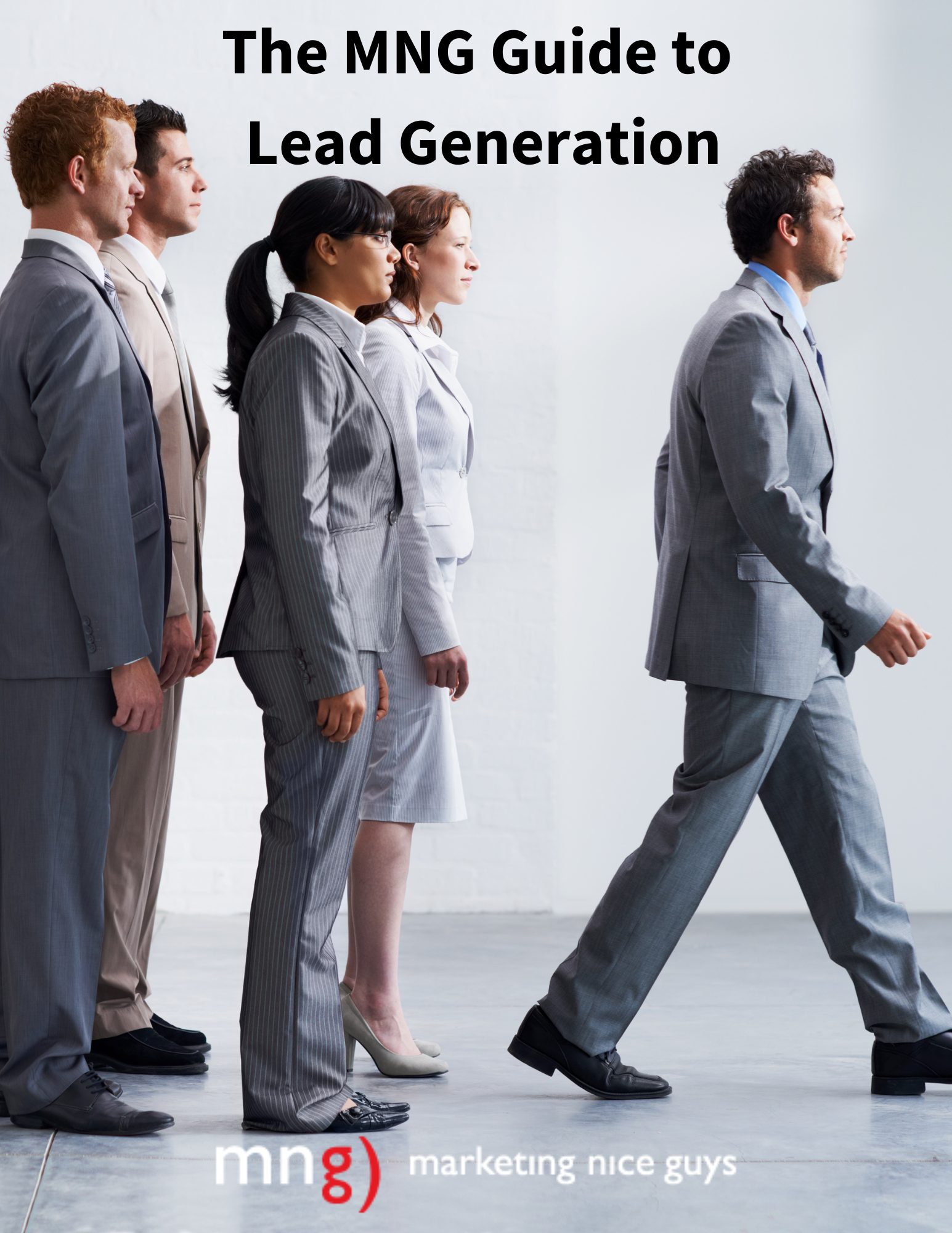Recently, we’ve been asked by a number of our small business clients to do a funnel analysis on their behalf. Basically, this process involves analyzing the entire customer journey – from awareness through acquisition, conversion/purchase, and advocacy – and making recommendations on areas of improvement. Oftentimes, we find a number of common “leaks” that occur at various funnel stages — individuals who are dropping out along the way who could make it further to the next stage had the company employed a different tactical approach.
Here are the 7 biggest leaks that we see and what businesses can do to address them.
Leak No. 1: Building a Consistent and Unique Brand Narrative (Top of the Funnel)
At the top of the funnel, most companies understand that the primary objective here is to create brand awareness. But it’s not just any awareness, it’s making sure that your brand comes across with a consistent narrative that you become known for, as well as a consistent look and feel.
Creating a consistent brand narrative is essential because it fosters a sense of trust and familiarity with potential customers. It involves establishing a unique brand message that resonates with your target audience and using it consistently across all marketing channels. Let’s dive further into the two key parts here. First, your narrative should “resonate” with your audience. Many companies, for example, put out a narrative that isn’t necessarily relevant to an audience’s challenges or pain points. That’s a big miss in terms of a funnel leak in that a company that simply “goes its own way” may simply be missing a big opportunity to reach a much bigger audience. At the same time, the narrative should be “unique” (it should still resonate but have its own place in the market). For instance, we see companies that will simply copy a more established competitor’s approach in this area. While it may help them grow in the beginning, ultimately the competitor’s presence will end up dwarfing their own simply because there’s no market differentiation.
Another aspect of projecting a consistent brand narrative involves the use of imagery as well as being consistent and unique in the application of colors and fonts. This is the visual part of the brand and the one that many businesses ignore because they think it’s unimportant. Why does this matter you ask? Can’t I just use any image or any font or color?
Sure you can, but what you’re essentially telling the customer is that visually you don’t represent anything. The best brands in any business are always disciplined about using a specific font, using only a certain set of colors to represent the company, and making sure the images, graphics, and videos they do fit with the overall narrative they’re trying to project. We’ve recently analyzed a number of companies that have used multiple fonts on the same page or used clashing color palettes or imagery that doesn’t fit the brand. Visually nothing is recognizable. And since it’s not recognizable, it’s not at all memorable. Contrast that with this scenario:
The other day I was walking in New York City and I happened to go by a restaurant. I didn’t see the name but I could see some text that was written on one of the displays. I instantly recognized the font and realized that restaurant was the Shake Shack. That’s the power of consistent visual branding.
Leak No. 2: Using Social Currency More Effectively as a Messaging Tool (Top of the Funnel)
Many companies that create content at the top of the funnel don’t realize there are really only 6 approaches to content marketing that really matter. These were detailed in the book Contagious, written by Wharton professor Jonah Burger. Burger was writing primarily about why things go viral, but in essence, he was really speaking about what makes marketing content “good.” The six approaches that form his STEPPS framework are the following:
- Social currency
- Triggers
- Emotion
- Public (Social proof)
- Practical
- Storytelling
You can read more about each approach highlighted in the link above. However, let’s take a deeper dive into one of these approaches small businesses often don’t take advantage of social currency. To highlight this, let’s take a group that we often help: Businesses that fall in the coaching, consulting training space. Not to discount the services each unique business provides in this area or the quality of it, but many of these companies are really about the same thing: life or skills improvement. Yet to get those clients to talk to them, the businesses really need to differentiate their message. And that’s where social currency content can play a big role.
Social currency is the idea that people share things that make them look good or knowledgeable. And companies that provide this kind of content to people will often be rewarded with business, especially if they can provide audiences the insights or knowledge they didn’t realize or know before. A great example of this is the coaching/training company Mindvalley. Founded by Vishen Lakhiani, its mission is to “teach the world the art of truly living extraordinary, fulfilling, happy lives.” If you follow Mindvalley on social or read any content it creates, its approach is typically all social currency – telling audiences an insight into reasons for an extraordinary person’s success or some other thing that can be passed along to make audiences seem smarter about something.
Why is this a funnel leak, you ask?
Think about the number of training, coaching, or consulting businesses in any space. It’s likely to be voluminous. What makes audiences choose one over the other? A lot of it gets back to leak no. 1 – whether the brand narrative resonates. But a good portion of the business in this space also revolves around the quality of ideas and insights. Social currency content is a great way for businesses to create content that fits the brand but also gives people answers to questions that aren’t so run-of-the-mill. For this reason, we’d argue that these businesses, in particular, aren’t in the coaching, training, and consulting space as much as they are in the social currency space. It can be the difference between customers taking the next step to finding out more about you and those who don’t.
Funnel Leak No. 3: Focusing on Purchasing for Display/Video Advertising (Top-of-the Funnel)
A lot of small companies we’ve encountered swear off advertising because they’ve had a bad experience with it. They’ll do all the right targeting of the audiences they want, they’ll create the visual aspects of the ad, which may look great, focus on promoting their product or service, and then after launching, will inevitably be disappointed about the performance of the ad or the lack of conversions from it.
The problem?
The companies are often focusing on the wrong message for audiences who may not currently be in-market for services. Outside of the retail industry (or placing ads in Google search) – which can drive purchases direct from advertising — messaging about buying your product or service in display advertising is often a losing proposition for most small business ads. One that will ultimately cost you money and not drive significant results.
The better approach for most brands is to think of advertising in terms of how you might introduce the company to new audiences or keep yourself top-of-mind so they come back to visit your website or learn more. This is where having social currency you provide or consistent brand messaging is also crucial. In other words, change the messaging approach from being lower-funnel to top-of-the-funnel and you might find you get more individuals getting interested to start.
The other piece here: Use video. Especially when it comes to social media advertising or other visual (non-search) placements, video advertising tends to perform better than straight-display advertising. At Marketing Nice Guys, we’ve seen video outperform display across the board, sometimes improving click-thru rates by a 2:1 ratio. We often find this to be the case because video often will do a better job of drawing the eye and making individuals pay attention when they come across it.
Funnel Leak No. 4: Lacking Ad Landing-Page Relevance and Clear Next Steps (Middle-of-the Funnel)
At the middle of the funnel, the primary objective is to convert potential customers into leads, and one of the biggest leaks that can occur here includes failing to develop the right landing pages that convince people to put in their information or take the next step with the business. We often see this with advertising that promises one thing but then the payoff (the landing page) doesn’t deliver on the core message in the ad or promotion. (This is also true for content posted on social, and even website pages found in search, where the page copy doesn’t really match the page title.). When it doesn’t keep up with the promise of what visitors to your website came to expect, they will leave.
In that spirit, we have developed six elements of a great ad landing page:
- 1: Specify One Goal (And Make Sure It’s Prominent)
- 2: Consider the Visual Weight & Use ‘High-Quality’ Visuals
- 3: Less Is More When It Comes to Text
- No 4. Add a Section That Includes ‘Social Proof’
- 5: Build In an Enticing Call to Action
- 6: Include Your Contact Information, Address, or Other Contextual Information
See more about this on 6 Elements of a Great Ad Landing Page.
Funnel Leak No. 5: Automating & Segment Form Data Capture and Automating Emails
Even with decent-sized businesses that do more than $1 million per year in revenue, we’re often surprised that there’s no automation in place when it comes to form submission. (Mostly, it’s because the business never really bothered to set it up.) What happens is that a lead comes in through the website and the businesses then just “work it” – there’s typically a sales follow-up and there may or may not be a process to store the data in the email marketing automation system or CRM. For the latter, even when data does get entered for each prospect, human error or oversight often comes into play with random tagging or segmentation applied. We’ve seen this happen on more than one occasion where even the businesses themselves later don’t know why or how a particular prospect came to them for a solution in the first place.
That’s why automating the process of form submission with data capture is crucial. This involves integrating the landing pages with an email marketing automation system to capture the data of potential customers automatically and applying the proper segmentation and tagging of each profile – data that comes from the form itself. This helps businesses not only manage and track leads effectively, but it improves the process for following up at a later time with more relevant content (based on why the individual came to seek a solution or help on a topic in the first place).
Secondly, there’s also the automation of emails themselves. As a company grows, it will get harder and harder to manually send a response to each prospect. Better, in fact, to automate emails for various functions (even those where a salesperson or individual will follow up at some point). The automation will provide that immediate response and comfort level to the submitter relaying that you as a company received their outreach and telling them a timeframe to expect a response (if it’s a human outreach).
Automating emails is also critical for staying top of mind or helping to nurture prospects with personalized content that can help build trust. This is especially true for content/lead magnet downloads or webinar registration. Why not, for example, send an email series based on the download topic that helps the customer understand more about the company or addresses more of the known customer pain points?
The bottom line: Stop with the same manual emails to each prospect. Start segmenting and sending more automated personalized emails that can work as a follow-up to different audiences. That way you can save yourself time and improve the relevance and hopefully the willingness of your prospects to learn more.
Funnel Leak No. 6: Not Developing Compelling Testimonials (Lower Funnel)
At the bottom of the funnel, the primary objective is to convert leads into customers, and the one of the bigger misses that we see occurs when companies don’t create content testimonials that provide some sort of social proof for those who are in the decision-making or consideration phase of the buying process.
Creating content testimonials that provide social proof is critical because it helps to build trust with potential customers. (“Oh, so and so used this company, so maybe I should too.”) Social proof is the idea that people are more likely to trust and follow the actions of others. Testimonials work because feedback from previous customers will often highlight the benefits of using a product or service or their overall satisfaction with it. These can come in the form of text, images, or videos. What we often see is that companies either don’t collect testimonials or they don’t display them in a prominent place on the website or feature them in social media with any regularity. That’s a big missed opportunity in our mind to try to convince prospects at a crucial stage of the buyer journey.
Funnel Leak No. 7: Not Engaging with Current Customers or Forgetting About Them (Lower Funnel)
As a small business, you get a customer in the door, and then what happens? What do you do to continue to engage them? Educate them about your product or service they just bought? Get them to purchase again (if that’s applicable)? Get them to advocate on your behalf?
We often see many companies that are so focused on getting new clients in the door that they forget their “best” customers are often the ones they already have converted. This is where developing a process with current customers to keep them engaged in the products or services is also crucial.
This can come in the form of a feedback loop, which allows businesses to listen to the needs and challenges of their customers. For instance, a coaching business could use a survey tool to collect feedback from its customers. The feedback should be used to improve the products or services and create a better customer experience. It will also allow them to get insights into their products and services so they can better create content that works for customers (and potential prospects) and shows them how to better use the product or service.
Lastly, for local businesses, we often see missed opportunities in terms of them not setting up a Google My Business account or not asking for reviews. Google My Business allows businesses to show up on the map for local search results. Asking for testimonials on Google Reviews boosts the GMB account by providing business-critical social proof when customers are looking for solutions. A higher volume of ratings can also help to boost visibility in terms of local rankings as well.
Conclusion
By addressing these leaks, businesses can improve their marketing efforts, increase their conversion rates, and grow their business, oftentimes without needing to spend additional resources. At Marketing Nice Guys, we’re happy to take a look at different aspects of your marketing funnel and provide recommendations for optimization. Contact us today for a free consultation.






